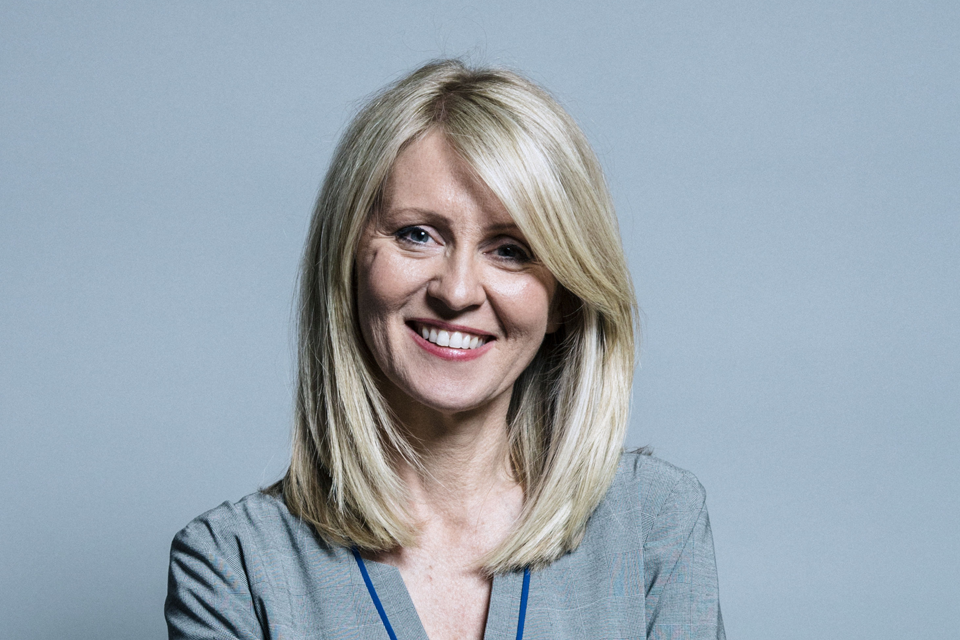Oral statement on Personal Independence Payment
Speech by Esther McVey MP.

Reform
And expenditure is now far in excess of initial estimated costs.
This year DWP expects to spend over £13 billion on DLA
As a percentage of GDP, we spend a fifth more than the EU average on disability benefits.
… and expect to spend more in real terms in 2015/16 than we did in 2009/10.
Today
Today we are publishing the Government’s consultation responses -, on the draft assessment criteria… and on the detailed design of PIP.
Alongside this, I will be laying in draft in Parliament the main PIP regulations, setting out the PIP entitlement conditions, assessment criteria and payment rates. And we will also publish in draft what the transitional arrangements might look like.
The main scheme regulations are subject to the affirmative procedure and I look forward to debating them in full early next year.
Personal Independence Payment will be, easier to understand and administer, financially sustainable, and more objective.
Throughout the whole development, we have consulted widely with disabled people. We have used their views to inform policy design and implementation plans. As a result of hearing these views, we have made several key changes to the final assessment criteria.
I would like to thank the individuals and organisations who contributed.
Starting with the rates. I am pleased to confirm the rates for PIP will be set at the same rates as DLA.
The daily living enhanced rate of PIP will be the same as the higher rate care component of DLA
And the standard rate of the daily living component will be set at middle rate DLA care component
The mobility rates of PIP will be the same as the DLA rates
Furthermore, following the Autumn Statement, these disability benefits will be protected within our uprating measures.
PIP, like DLA and Carer’s Allowance, will continue to be uprated by inflation.
Changes
The most important thing I want to announce today is that we have listened and acted on the huge amount of consultation we have had with disabled people and disability groups
We have made specific, key changes as a result of our engagement.
Outlined in full in our consultation responses, these include…
- broadening our approach to aids and appliances, assessing ability to read and taking account of specialist orientation aids that help mobility
- mirroring the linking rules for DLA - helping ensure continuity for people with fluctuating conditions
- and new plans for contacting young people when they reach the age of 16 or their appointees to help a smooth transition to PIP
All the changes we have made address the genuine concerns of disabled people and the organisations representing them.
Overall, their effect is to make PIP more transparent, objective, and fair…
Reassessment Strategy
We also listened carefully to concerns about the speed of reassessment.
To that end we will now undertake a significantly slower reassessment timetable to ensure we get this right.
It will be phased in starting with new claims only in a controlled start area in the North West and parts of the North East of England from April 2013.
We will then take new claims nationally from June 2013.
From October 2013 we will start reassessing people whose DLA award is due to end, people who report a change in condition and young people who reach the age of 16.
But now the peak period of reassessments will not start until October 2015.
This means we can learn from the early introduction of PIP - testing our process, and making sure the assessment is working correctly before we embark on higher volumes.
We will then consider the findings of our first independent review planned for 2014 and act on its findings.
Importantly, unless they report a change in their condition, those with a lifetime or indefinite DLA award will not be reassessed until October 2015 at the earliest.
Impacts
We can now publish caseload assumptions about the impact of PIP.
These figures clearly show that PIP will deliver its key objective - focussing support on those with the greatest needs.
By October 2015 we estimate we will have reassessed 560,000 claimants.
Of these 160,000 will get a reduced award and 170,000 will get no award. However 230,000 will get the same support or more support.
Under the new criteria, almost a quarter of PIP recipients will get both of the highest rates - worth £134.40 each week - compared to only 16% on DLA.
But by reforming the system, ensuring it is fit for the 21st century… we can use the money we spend on disabled people more efficiently and effectively, to help those most in need.